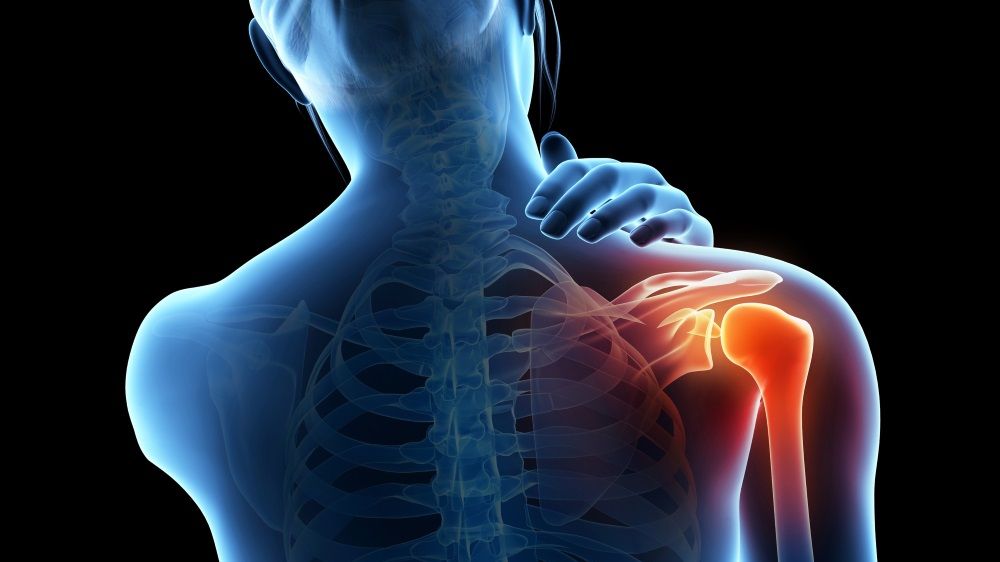Table of Contents
Introduction
Have you ever experienced the sharp, debilitating pain of a joint injury? Whether you’re an athlete, a weekend warrior, or someone who simply tripped over a loose rug, joint injuries can happen to anyone, anytime. The immediate aftermath often leaves us scrambling for quick fixes, usually in the form of over-the-counter medications. But what if there was a better way?
Imagine a world where you could harness the power of Natural remedies for joint injury effectively. No more worrying about the side effects of synthetic drugs or the long-term impact of invasive treatments. We’re talking about tried-and-true natural remedies that not only alleviate pain but also aid in your body’s innate healing process. Intrigued? You should be.
What if I told you that I’ve been through this journey myself? As an osteopath with over two decades of experience, I’ve seen countless patients struggle with joint injuries. But it wasn’t until I faced a similar ordeal that I truly understood the value of natural remedies. From the immediate application of arnica cream to the surprising benefits of CBD and even a medicinal whiskey, I’ve explored various natural solutions that have significantly sped up my recovery. And the best part? You can do it too.
So, are you ready to take charge of your own healing? Dive into this comprehensive guide where I’ll share not just the ‘what,’ but also the ‘how’ of using natural remedies for joint injuries. Say goodbye to synthetic drugs and hello to a healthier, more holistic approach to recovery. Keep reading to unlock the secrets to natural healing for joint injuries—your body will thank you for it!
By the end of this guide, you’ll be equipped with actionable insights and a step-by-step plan to kickstart your natural healing journey. Let’s get started!
A Deep Dive into My Personal Experience with Joint Injury: Lessons Learned and Remedies Applied
The Incident: A Simple Trip with Complex Consequences
It was a typical weekend, filled with the usual errands and family activities. The sun was shining, and the day seemed promising. But in a split second, everything changed. I tripped over an uneven surface and felt a sharp, excruciating pain shoot through my ankle. I knew instantly that this was more than just a minor stumble; I had sprained my ankle.
The Immediate Aftermath: Assessing the Situation
As I lay there on the ground, my wife rushed over, initially laughing at my clumsiness but quickly realizing the gravity of the situation. I managed to stand up and put weight on my ankle, confirming it wasn’t a severe sprain that required immediate medical attention. However, the discomfort was palpable, and I could feel the swelling begin to set in.
The First 24 Hours: When Reality Hits
We proceeded with our day’s plans, but I was cautious with every step, especially on uneven surfaces. By the evening, the swelling had intensified, and the pain was becoming unbearable. It was clear that my body was initiating its natural inflammatory response, a double-edged sword that aids in healing but also causes discomfort.
The Healing Response: Understanding Acute Inflammation
This was a textbook case of acute inflammation, a biological response that occurs after an injury. While inflammation often gets a bad rap, it’s essential to understand that it’s a healing mechanism. Your body sends a rush of blood and nutrients to the affected area, causing swelling and limiting movement to prevent further damage. However, this process isn’t immediate; it takes time for your body to mobilize its resources.
Turning to Natural Remedies: The Game Plan
At this point, I knew I had to take action. Drawing upon my years of experience as an osteopath, I decided to opt for natural remedies to facilitate the healing process.
Arnica Cream: The First Line of Defense
I immediately applied arnica cream to the injured area. Known for its anti-inflammatory properties, arnica is a go-to natural remedy for sprains and bruises.
CBD: The Unsung Hero
Next, I used CBD, which has shown promise in aiding the body’s natural repair processes. While more research is needed, anecdotal evidence suggests that CBD can be a useful addition to your natural healing toolkit.
Epsom Salt Bath: A Soothing Solution
I also soaked my foot in an Epsom salt bath. Rich in magnesium, Epsom salts can help reduce inflammation and relax your muscles, providing immediate relief.
Whiskey: A Temporary Reprieve
For immediate pain relief, I indulged in a large whiskey. While not a long-term solution, it did provide temporary respite from the discomfort.
The Road to Recovery: A Week Later
A week after the incident, the swelling had significantly reduced, and the pain was almost entirely gone. However, complete healing will still take another 5-7 weeks, a testament to the body’s intricate and time-consuming healing process.
Lessons Learned: Empowering Your Own Healing
This personal experience reaffirmed my belief in the power of natural remedies. It also served as a reminder that while medical advancements have come a long way, there’s still no shortcut to the body’s natural healing process. By opting for natural remedies, I was able to support my body’s innate ability to heal, rather than suppress it with synthetic drugs.

So, if you ever find yourself in a similar situation, remember that you have the power to facilitate your own healing. Trust in natural remedies and give your body the time it needs to recover fully.
The Ultimate Guide to Tried-and-Tested Natural Remedies for Joint Injuries
When it comes to joint injuries, the immediate instinct for many is to reach for over-the-counter medications or even prescription drugs. However, natural remedies offer an alternative that can be both effective and free from the side effects commonly associated with pharmaceuticals. Based on both scientific evidence and my personal experience, here are some tried-and-tested natural remedies for treating joint injuries.
Arnica Cream: The Natural Anti-Inflammatory
What is it?
Arnica is a homeopathic remedy derived from the Arnica montana plant. It’s widely available in cream or gel form and is known for its anti-inflammatory and analgesic properties.
How Does it Work?
Arnica cream works by stimulating the activity of white blood cells that perform anti-inflammatory actions, such as dispersing trapped fluids from bruised tissue, joints, and muscles.
How to Use it?
Apply a thin layer of arnica cream to the affected area as soon as possible after the injury occurs. Reapply every 3-4 hours for the best results.
CBD: The Multi-Faceted Healer
What is it?
Cannabidiol (CBD) is a non-psychoactive compound found in cannabis plants. It has gained popularity for its potential therapeutic properties, including anti-inflammatory effects.
How Does it Work?
CBD interacts with the body’s endocannabinoid system, which plays a role in regulating various physiological processes, including pain and inflammation.
How to Use it?
CBD can be applied topically as a cream or taken orally as a tincture or capsule. For joint injuries, topical application is often recommended for targeted relief.
Epsom Salt Baths: The Relaxing Detoxifier
What is it?
Epsom salt, or magnesium sulfate, is a chemical compound that’s often used in baths to relieve muscle soreness, stiffness, and inflammation.
How Does it Work?
When dissolved in water, Epsom salt releases magnesium and sulfate ions, which are absorbed through the skin. Magnesium plays a crucial role in reducing inflammation and muscle tension.
How to Use it?
Fill a bathtub with warm water and add 1-2 cups of Epsom salt. Soak the affected joint for at least 15-20 minutes. For localized injuries, an Epsom salt foot or hand bath can also be effective.
Comfrey Oil: The Forgotten Gem
What is it?
Comfrey is a plant that has been used for centuries for its healing properties. Comfrey oil is derived from the leaves and roots of the plant and is often used to treat sprains and bruises.
How Does it Work?
Comfrey contains allantoin, a substance that speeds up the natural replacement of body cells, aiding in faster healing.
How to Use it?
Apply comfrey oil directly to the affected area and gently massage it in. Use it 2-3 times a day for optimal results.
The Importance of Pain-Free Movement
While not a “remedy” in the traditional sense, pain-free movement is crucial for effective healing. Gentle, repetitive movement within a pain-free range can help damaged tissue repair more effectively, reducing scarring and strengthening the affected area.
Natural remedies offer a holistic approach to healing joint injuries. They not only alleviate pain but also support the body’s innate healing mechanisms. By incorporating these tried-and-tested remedies into your recovery plan, you can facilitate a more effective and natural healing process.
The Case Against Anti-Inflammatory Drugs: Why I Chose Natural Remedies for My Joint Injury
In the modern world, the immediate response to pain and inflammation often involves reaching for a bottle of anti-inflammatory drugs. Whether it’s ibuprofen, aspirin, or more potent prescription medications, these drugs are widely used for quick relief from discomfort. However, during my recent experience with a joint injury, I consciously chose to avoid anti-inflammatory drugs. Here’s why:

The Double-Edged Sword of Anti-Inflammatory Drugs
Short-Term Relief, Long-Term Consequences
Anti-inflammatory drugs are effective at reducing inflammation and providing immediate pain relief. However, this short-term benefit can come at a long-term cost. These drugs can interfere with the body’s natural healing process, potentially prolonging recovery time.
Side Effects: Not to be Ignored
Anti-inflammatory medications are not without side effects. They can cause gastrointestinal issues, increase the risk of heart problems, and lead to kidney or liver damage when used for extended periods or in high doses.
The Natural Healing Process: A Delicate Balance
Inflammation: A Necessary Evil
Inflammation is the body’s natural response to injury. While it causes discomfort, it’s a crucial part of the healing process. Inflammation helps to isolate the affected area, preventing further damage, and initiates the repair process by attracting nutrients and immune cells to the site of injury.
The Risk of Suppression
Anti-inflammatory drugs work by inhibiting enzymes that produce prostaglandins, substances that promote inflammation. While this reduces pain, it also suppresses the natural inflammatory response, potentially hindering the healing process.
The Power of Natural Remedies: Support Rather Than Suppress
Holistic Healing
Natural remedies like arnica cream, CBD, and Epsom salt baths offer a more holistic approach to healing. They aim to support the body’s natural healing mechanisms rather than suppress them.
No Side Effects
One of the most significant advantages of natural remedies is the absence of harmful side effects, making them a safer option for long-term use.
Empowering the Body
By choosing natural remedies, I felt like I was empowering my body to heal itself, rather than forcing it into submission with synthetic drugs.
The Road to Recovery: A Conscious Choice
A week after my injury, I was pleased to find that the swelling had significantly reduced and the pain was almost entirely gone. This experience reaffirmed my belief in the power of natural remedies and the body’s innate ability to heal itself when given the right support.
While anti-inflammatory drugs have their place in medicine, especially for severe or chronic conditions, they may not always be the best choice for minor injuries. By understanding the role of inflammation in the healing process and the potential drawbacks of anti-inflammatory medications, I was able to make a more informed decision for my recovery. I chose to support my body’s natural healing process, and I encourage others to consider doing the same.
Unlock the Power of Silver Gel 50g: Your All-in-One Solution for Skin Irritations
Skin irritations can be a real nuisance, affecting your daily life and overall well-being. Whether it’s a minor cut, a nasty insect bite, or a more severe condition like acne, finding an effective treatment is crucial. Enter Silver Gel 50g—a powerful, all-in-one solution that offers natural healing for various skin irritations. In this comprehensive guide, we’ll delve into the benefits of Silver Gel, backed by scientific evidence, and explore how you can use it to achieve optimal skin health.

The Power of Silver Gel
Antimicrobial Properties
One of the standout features of Silver Gel is its potent antimicrobial properties. Silver has been used for centuries in medical treatments, and modern science confirms its effectiveness in killing bacteria, viruses, and fungi. This makes it an excellent choice for treating skin irritations that are prone to infection.
Anti-Inflammatory Benefits
Inflammation is often the root cause of many skin irritations. Silver Gel is rich in anti-inflammatory properties that help to reduce swelling and redness, providing immediate relief.
Scientific Evidence
Several scientific studies support the effectiveness of silver gel in wound care and skin health. For instance, a study published in PMC showed that silver nanoparticle gel significantly improved the healing of traumatic oral ulcers in rats.
Common Skin Irritations and Their Treatment with Silver Gel
Cuts and Scrapes
For minor cuts and scrapes, Silver Gel acts as a protective layer, preventing infection and speeding up the healing process.
Burns and Sunburn
Silver Gel is highly effective in treating burns, including sunburn. Its cooling effect provides immediate relief, while its antimicrobial properties prevent infection.
Insect Bites and Rashes
The anti-inflammatory properties of Silver Gel are particularly useful for treating insect bites and rashes, reducing itchiness and discomfort.
Precautions and Contraindications
While Silver Gel is generally safe for all skin types, it’s essential to perform a patch test first. Also, consult a healthcare professional if you have specific skin conditions that may react adversely to silver gel.
Nanotech Silver Gel

How to Use Silver Gel for Skin Irritations
- Clean the Affected Area: Before applying Silver Gel, make sure to clean the affected area with mild soap and water.
- Apply a Thin Layer: Gently apply a thin layer of Silver Gel to the irritated skin.
- Frequency and Duration: For best results, apply the gel 2-3 times a day until the irritation subsides.
Product Recommendations and Reviews
There are various Silver Gel products available in the market, but one that stands out is the Sovereign Silver First Aid Gel. It has received excellent customer reviews and is highly recommended for its effectiveness in treating a wide range of skin irritations.
Side Effects and Precautions
While Silver Gel is generally safe, it’s crucial to be aware of potential side effects like allergic reactions. Always perform a patch test before full application and consult a healthcare professional for specific medical conditions.
Comparisons: Silver Gel vs. Other Wound Care Treatments
When compared to other wound care treatments like antibiotic ointments, Silver Gel offers a natural alternative without the risk of antibiotic resistance. Its broad-spectrum antimicrobial and anti-inflammatory properties make it a superior choice for treating various skin irritations.
Silver Gel 50g is a versatile and powerful solution for treating a wide range of skin irritations. Its antimicrobial and anti-inflammatory properties, backed by scientific evidence, make it a reliable choice for achieving healthy skin. Whether you’re dealing with minor cuts or more severe conditions like burns and acne, Silver Gel offers a natural, effective remedy. So why wait? Unlock the power of Silver Gel today and experience the ultimate skin relief.
The Road to Recovery: Navigating the Healing Journey After a Joint Injury
Recovering from a joint injury is a complex process that involves more than just waiting for time to pass. It’s an active journey that requires a thoughtful approach, incorporating both physical and mental aspects of healing. Here’s a detailed look at my road to recovery, which may offer insights for anyone facing a similar challenge.

The Initial Phase: Acknowledging the Injury
Acceptance and Assessment
The first step in any recovery journey is acknowledging the injury and assessing its severity. In my case, I knew I had sprained my ankle, but I was able to put weight on it, indicating that it wasn’t a severe sprain requiring immediate medical attention.
Immediate Action
I applied arnica cream right away and continued to do so throughout the day. I also soaked my foot in an Epsom salt bath and used CBD to aid the healing process.
The First Week: Critical Moments
Monitoring Symptoms
During the first week, I closely monitored the swelling and pain levels. I continued to apply natural remedies like arnica cream and comfrey oil, focusing on supporting my body’s natural healing mechanisms.
Limited Mobility
I was cautious with my movements, especially on uneven surfaces. I also kept my foot elevated whenever possible to reduce swelling.
Pain-Free Movement
I engaged in gentle, repetitive movements within a pain-free range to help the damaged tissue repair more effectively.
The Turning Point: Signs of Improvement
Reduced Swelling and Pain
By the end of the first week, the swelling had significantly reduced, and the pain was almost entirely gone. This was a clear sign that my body was healing.
Increased Mobility
I was able to use the clutch on my car and even walk without a limp, although I continued to exercise caution on uneven surfaces.
The Ongoing Journey: Towards Complete Healing
Continued Care
While the most challenging part was over, complete healing would still take another 5-7 weeks. I continued to apply natural remedies and engage in pain-free movement.
Gradual Return to Normalcy
I gradually resumed my regular activities, always mindful of my healing ankle. I also continued to move my foot up and down while driving to work, as part of my ongoing healing process.
Mental Resilience
Recovery is not just a physical process; it’s also a mental one. Staying positive and focused played a crucial role in my healing journey.
Final Thoughts: The Power of Informed Choices
My road to recovery was a testament to the effectiveness of natural remedies and the body’s incredible ability to heal itself when given the right support. By making informed choices and actively participating in my healing process, I was able to recover without the use of synthetic drugs or invasive treatments.
So, if you’re on the road to recovery from a joint injury, remember that you have the power to influence the outcome. Make informed choices, trust in natural remedies, and give your body the time and support it needs to heal fully.
The Takeaway: Empower Your Healing for a More Effective Recovery Journey
The journey to recovery from a joint injury is a multifaceted process that involves not just physical healing but also mental resilience. It’s a path that requires active participation, informed choices, and a deep understanding of your body’s innate ability to heal itself. Here’s the key takeaway to empower your healing journey:
Take Control with Informed Choices
The first step in empowering your healing is making informed choices. Whether it’s opting for natural remedies over synthetic drugs or understanding the role of inflammation in the healing process, knowledge is power. Equip yourself with the right information to make decisions that align with your body’s natural healing mechanisms.
Trust in Natural remedies for joint injury
Natural remedies like arnica cream, CBD, and Epsom salt baths offer a holistic approach to healing. They not only alleviate pain but also support your body’s innate healing processes. By opting for natural remedies, you’re choosing to support rather than suppress your body’s ability to heal.

Engage in Active Healing
Recovery is not a passive process; it requires active engagement. From applying natural remedies to engaging in pain-free movement, every action you take contributes to your healing journey. Be proactive in your approach, and don’t underestimate the power of small, consistent actions.
Listen to Your Body
Your body has its own wisdom, and it’s crucial to listen to it. Pay attention to pain signals, monitor your symptoms, and adjust your actions accordingly. Your body will often tell you what it needs; you just have to listen.
Cultivate Mental Resilience
A positive mindset can significantly impact your recovery. Mental resilience helps you stay focused, reduces stress, and can even enhance your body’s healing processes. Incorporate mindfulness techniques, positive affirmations, or even meditation to bolster your mental strength.
Give It Time
Healing is a process that can’t be rushed. While it’s natural to want quick results, it’s essential to understand that your body needs time to repair and regenerate. Be patient and give your body the time it needs to fully recover.
Final Thoughts
Empowering your healing is about taking an active role in your recovery. It’s about making choices that align with your body’s natural ability to heal and giving it the support it needs. By doing so, you’re not just speeding up your recovery; you’re also setting the stage for a healthier, more resilient you. So take charge of your healing journey, because your body—and your future self—will thank you for it.

